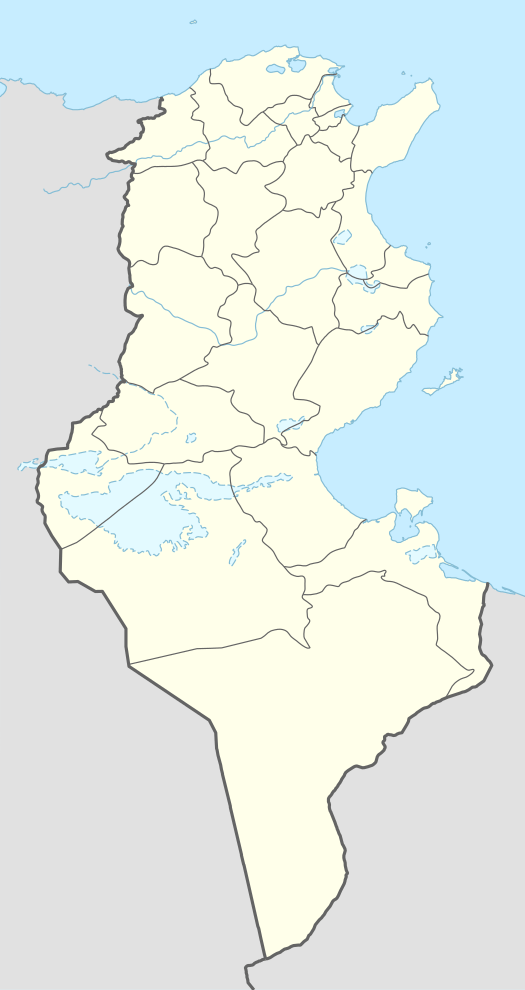Scillium
Scillium is an ancient city in the Roman province of Africa Proconsularis, located on the site of current Kasserine. Its episcopal see was a suffragan of the see of Carthage, capital of the province.
 Shown within Tunisia | |
| Location | Tunisia |
|---|---|
| Region | Kasserine Governorate |
| Coordinates | 35.166667°N 8.833333°E |
History
On 17 July, 180, six martyrs (Scillitan Martyrs) suffered for the Faith at Scillium; later, a basilica in which St. Augustine preached[1] was dedicated to them (near Douar esh-Shott, west of the town). The Greek version of their Acts, in an addition which is later, says they were natives of "Ischle, Ischle, in Numidia". This name is a Greek transcription of Scillium. The tradition is already recorded in the primitive calendar of Carthage.[2] The Greek compiler intended possibly to speak not of the Province of Numidia, but of the Numidian country and so would have placed Scillium in Proconsular Numidia. In an epitaph of Simitthu, now Chemtou, we read Iscilitana; Simitthu was certainly in Proconsular Numidia, but was Scillium near it? A definitive answer is impossible, and the exact location of Scillium is unknown.
Two of its bishops are mentioned: Squillacius, present at the Conference of Carthage in 411; and Pariator, who signed the letter addressed in 646 by the council of the proconsulate to the Patriarch Paul of Constantinople against the monothelites.
The town is mentioned in the seventh century by Georgius Cyprius[3] under the name of Schele.
Scillium was the native place of St. Cucuphas, martyred at Barcelona,[4] and of St. Felix, martyred at Girona.[5]
Sources

Note
The above is taken from the entry "Scillium" by Sophrone Pétridès in the Catholic Encyclopedia of 1912.[7] Scilium is the spelling that appears in the 2013 edition of the Annuario Pontificio[8] and some other recent sources.[9] Other sources also report the Scilitan or Scillitan Martyrs not as six but as twelve and as having been tried and executed in Carthage.[10]
References
- Victor Vitensis, Persecut. Vandal. I, 3, 9; August, Serm. 155, ed. Migne.
- XVI K. Aug. ss. Scilitanorum (see Martyrolog. Hieronym.", ed. Duchesne and de Rossi, pp. lxx and 92.
- "Descriptio orbis romani", 662, ed. Heinrich Gelzer, Leipzig, 1890, pp. 34, 106.
- feast on 25 July; cf. Acta Sanctorum, July VI, 149.
- feast on 1 August; cf. Acta SS., August, I, 22.
- "Annuaire pontifical catholique", Paris, 1910.
- Sophrone Pétridès, "Scillium" in Catholic Encyclopedia (New York 1912)
- Annuario Pontificio 2013 (Libreria Editrice Vaticana, 2013, ISBN 978-88-209-9070-1), p. 966
- For example,| Daniel Bühler, "Die Jesus-Verschwörung" in Der Tagesspiegel, 7 December 2012
- For example, Martyrologium Romanum (Libreria Editrice Vaticana 2000, ISBN 978-88-209-7210-3), p. 374
%2C_Algeria_04966r.jpg)